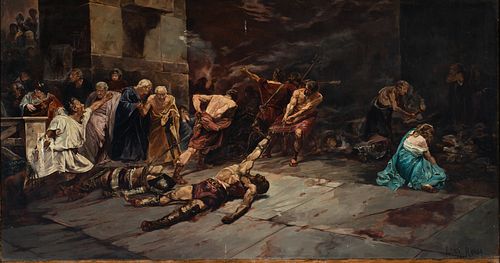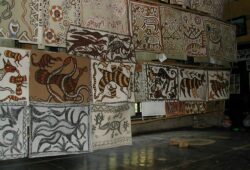Juan Luna: A Masterful Brush that Defined a Nation’s Artistic Identity
 Posted On
Posted On
Juan Luna, a prominent Filipino painter of the 19th century, left an indelible mark on the world of art with his unparalleled talent and distinctive style. Born on October 23, 1857, in Badoc, Ilocos Norte, Philippines, Luna’s journey from a provincial town to becoming an international art sensation is a testament to his passion, perseverance, and innate artistic brilliance.
Luna’s early artistic inclinations were nurtured by his family’s support, particularly his mother, who recognized his prodigious talent. At the age of 14, he entered the Academia de Dibujo y Pintura (Academy of Drawing and Painting) in Manila, where his skills flourished under the guidance of his mentors. As a student, Luna’s dedication was evident, and he rapidly gained recognition for his exceptional attention to detail and a keen eye for capturing realism.
His experiences in Europe would play a pivotal role in shaping his artistic style and worldview. In 1877, he received a scholarship to study at the Academia de Bellas Artes de San Fernando in Madrid, Spain. Immersed in the European art scene, Luna was exposed to a diverse range of artistic influences, from the classical works of the Renaissance to the emerging Impressionist movement. This exposure contributed to the fusion of Western techniques and Filipino themes that became characteristic of his later works.
Luna’s masterpiece, “Spoliarium,” unveiled in 1884 at the Exposición Nacional de Bellas Artes in Madrid, catapulted him to international fame. This massive canvas depicts fallen gladiators being dragged from the Roman arena, symbolizing the agony of colonization and oppression experienced by his native Philippines. The painting not only showcased Luna’s technical mastery but also encapsulated the fervent spirit of nationalism that coursed through his veins.
His artistic prowess wasn’t limited to large-scale historical paintings; Luna also excelled in portraiture. His portraits captured not only the physical likeness of his subjects but also their inner emotions and character. “La Bulaqueña,” for instance, portrays a woman in a traditional Filipiniana dress, exuding grace and strength. Through his portraiture, Luna revealed the essence of the Filipino people, celebrating their individuality while forging a sense of collective identity.
Luna’s return to the Philippines in 1894 marked a new chapter in his career and life. Despite his triumphs abroad, he never forgot his roots and was driven by an ardent desire to contribute to his homeland’s cultural awakening. His establishment of the “Liga Filipina,” an art association that aimed to promote nationalistic themes in art, highlighted his dedication to nurturing the local artistic community.
Tragically, Luna’s life was cut short on September 26, 1899, when he was killed in a duel in Manila. Despite his untimely death, his legacy endures as a beacon of inspiration for generations of Filipino artists. His impact on Philippine art remains immeasurable, and his works continue to be celebrated in galleries and museums around the world.
In conclusion, Juan Luna’s artistic journey represents a powerful narrative of talent, determination, and cultural identity. His masterpieces transcend time, stirring emotions and prompting reflection on the struggles and triumphs of a nation. Luna’s ability to infuse his paintings with a profound sense of nationalism while showcasing his technical brilliance solidifies his place as one of the Philippines’ most revered and influential painters.



